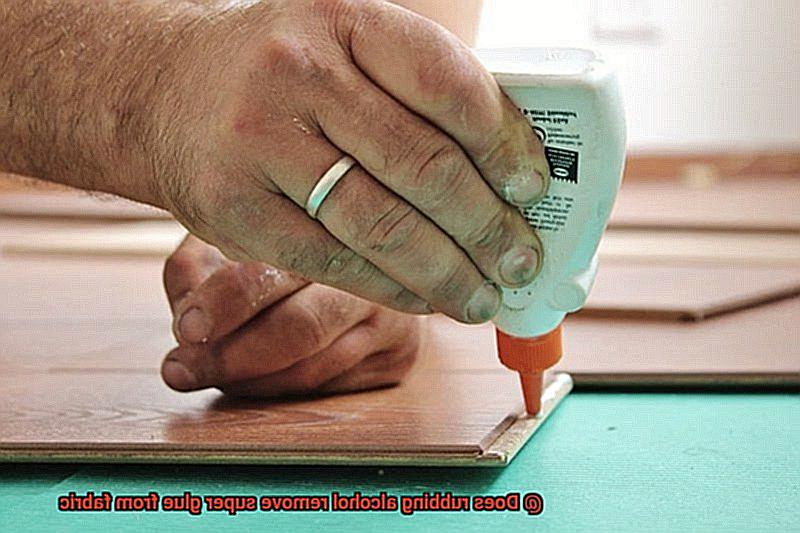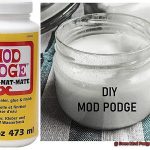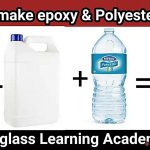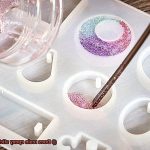Do you have a stubborn super glue stain on your favorite fabric that just won’t budge? It’s frustrating, we know. But fear not, because rubbing alcohol may be the solution you’ve been searching for.
Rubbing alcohol, also known as isopropyl alcohol, has been hailed as a miracle cleaner for decades. Not only can it disinfect surfaces and kill germs, but it can also tackle tough stains like super glue on fabric.
But before you start dousing your clothes in rubbing alcohol, it’s important to understand the proper method for removing super glue without causing further damage. One wrong move could lead to even more staining and heartbreak.
That’s where we come in. In this blog post, we’ll break down everything you need to know about using rubbing alcohol to remove super glue from fabric. From the types of fabrics that can handle this cleaning method to the step-by-step instructions for success, consider us your personal stain removal experts.
So put on a pot of coffee (or tea if that’s more your thing), sit back and relax while we guide you through the process of banishing those pesky super glue stains with ease.
What is Rubbing Alcohol?
Contents
- 1 What is Rubbing Alcohol?
- 2 How Does Rubbing Alcohol Remove Super Glue from Fabric?
- 3 Factors to Consider Before Using Rubbing Alcohol on Fabrics
- 4 Pros and Cons of Using Rubbing Alcohol on Fabrics
- 5 Alternative Solutions for Removing Super Glue from Fabric
- 6 Tips for Safely Using Rubbing Alcohol on Fabrics
- 7 Benefits of Professional Cleaning Services for Removing Super Glue from Fabric
- 8 Conclusion
Rubbing alcohol, also known as isopropyl alcohol, is a powerful and multifaceted item that serves various purposes. It is a clear and colorless liquid with a strong odor that can be found in most medicine cabinets. Rubbing alcohol is commonly used for disinfecting surfaces or as an antiseptic, but did you know that it can also be used to remove super glue from fabric?
At its core, rubbing alcohol contains a solvent called isopropyl alcohol, which can dissolve the bonds between super glue molecules. This makes it an effective solution for removing super glue from fabric. However, its effectiveness depends on a few factors such as the type of fabric and the severity of the glue stain. It’s important to note that rubbing alcohol may not work on all fabrics and may cause damage to some delicate fabrics.
If you’re looking to use rubbing alcohol to remove super glue from fabric, start by testing a small, inconspicuous area of the fabric to ensure it doesn’t discolor or damage the material. If it’s safe to use, saturate a cotton ball or cloth with rubbing alcohol and apply it to the affected area. Allow the rubbing alcohol to sit for a few minutes, then gently rub the fabric with a soft-bristled brush or cloth. Repeat this process until the glue is fully removed.
While rubbing alcohol is highly effective in removing super glue from fabric, it’s essential to take precautions while using it. Ensure you’re using it in a well-ventilated area and avoid inhaling the fumes. Additionally, wear gloves to protect your skin from prolonged exposure to rubbing alcohol.
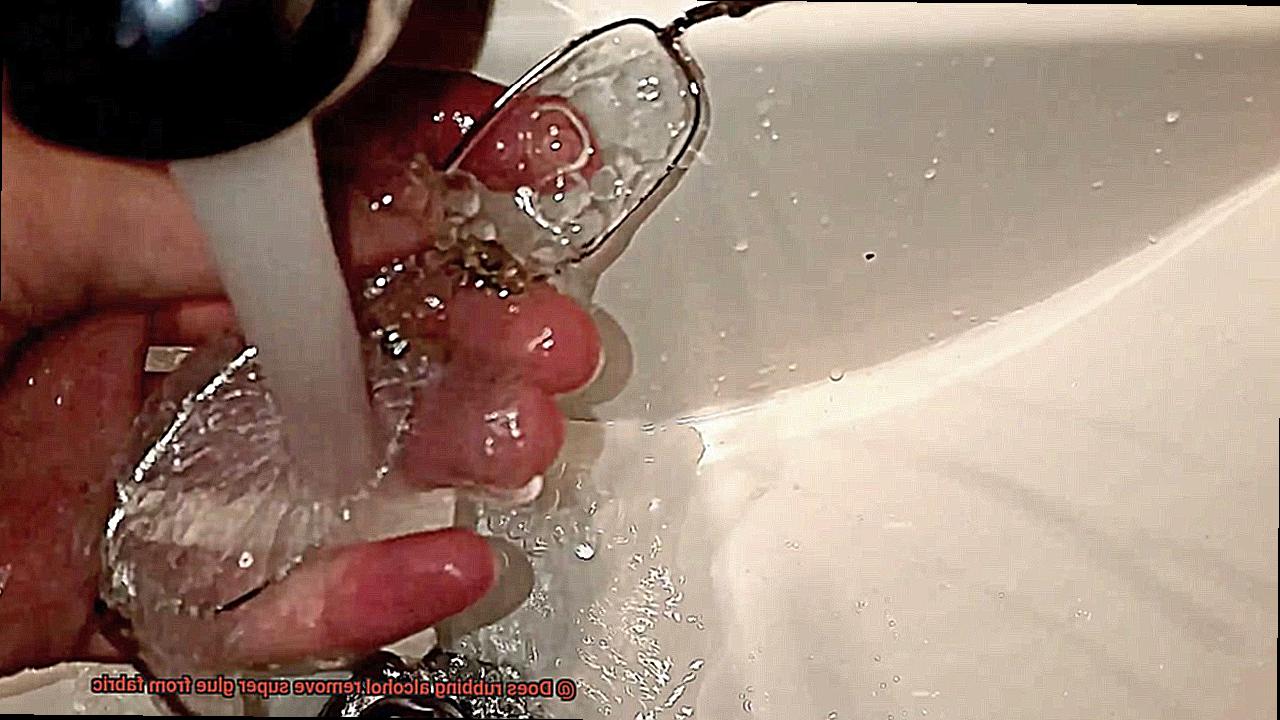
If rubbing alcohol doesn’t work for your specific fabric or stain type, there are alternative solutions available. Acetone or nail polish remover can also dissolve super glue but should be used with caution as they can cause damage to certain types of fabrics.
How Does Rubbing Alcohol Remove Super Glue from Fabric?
Super glue, also known as cyanoacrylate adhesive, forms a strong bond between surfaces, making it challenging to remove from fabric. However, rubbing alcohol is a powerful solvent that can effectively dissolve this bond and make it easier to remove the glue.
But how does rubbing alcohol work its magic? It penetrates the fibers of the fabric and breaks down the chemical composition of the glue. This process weakens the bond between the glue and the fabric, making it easier to remove with mild scraping or rubbing.
However, caution must be taken when using rubbing alcohol on delicate fabrics such as silk or rayon. Always do a spot test on an inconspicuous area before applying rubbing alcohol to the affected area.
Here’s how you can use rubbing alcohol to remove super glue from fabric:
- Dampen a cotton ball or cloth with rubbing alcohol.
- Press it firmly against the affected area for several minutes to allow the alcohol to penetrate the fabric fibers and dissolve the glue bond.
- Gently scrape off any loosened glue with a plastic scraper or spatula.
- Repeat steps 1-3 until all the super glue is removed.
- Wash the fabric with mild detergent and warm water to remove any remaining traces of rubbing alcohol.
With proper care and application, rubbing alcohol can help you bid adieu to stubborn super glue stains from your favorite fabrics. However, it’s essential to use it cautiously and do a spot test before going all in.
Factors to Consider Before Using Rubbing Alcohol on Fabrics
Rubbing alcohol may be the solution you’re looking for, but before you begin, there are several crucial factors to take into account.
Fabric type is a key consideration. Delicate fabrics such as silk or lace may be easily damaged by rubbing alcohol, so it’s essential to identify the type of fabric before proceeding with any removal efforts.
The extent of the stain is also important. If it’s a small and recent stain, rubbing alcohol may work wonders. However, if the stain is extensive or has been set into the fabric for a while, it may require more than just rubbing alcohol to remove it completely.
The concentration of rubbing alcohol being used is another essential factor to consider. Higher concentrations may be more effective in removing super glue stains, but they also carry a higher risk of damaging the fabric. Always start with a lower concentration and gradually increase as needed.
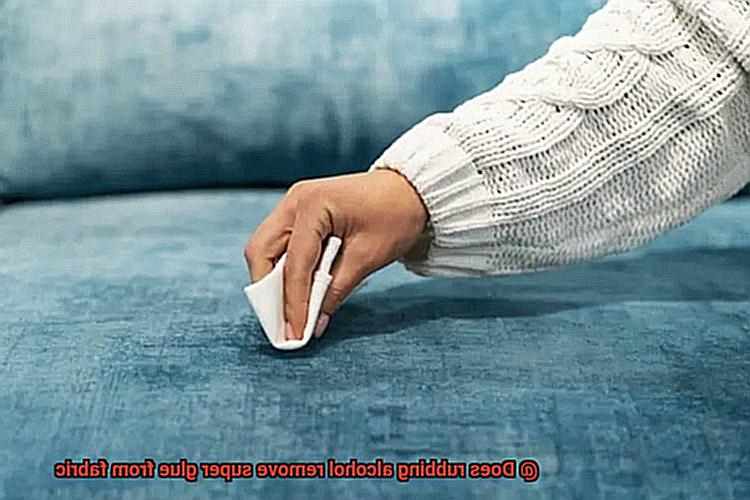
Before applying rubbing alcohol to any significant part of the fabric, it’s crucial to test it on a small, inconspicuous area. This will help determine if the rubbing alcohol causes any damage or discoloration to the fabric.
Lastly, it’s crucial to use caution when applying rubbing alcohol to fabrics. Vigorous rubbing or too much pressure can cause damage to the fabric fibers or spread the super glue stain further. Always apply gently and patiently.
Pros and Cons of Using Rubbing Alcohol on Fabrics
Rubbing alcohol is a popular cleaning solution for removing super glue from fabric, but it’s essential to understand the pros and cons before using it.
On the positive side, rubbing alcohol is a powerful solvent that can dissolve and break down adhesive substances quickly. It’s also easily accessible at most drugstores and is relatively inexpensive compared to other cleaning solutions. Additionally, it’s fast-acting and can remove tough stains in no time.
However, there are potential drawbacks to using rubbing alcohol on fabrics. One major concern is that it may not be suitable for all types of fabrics or colors. Some fabrics may discolor or become damaged when exposed to rubbing alcohol. Therefore, it’s crucial to test it first on a small and inconspicuous area of the fabric before applying it to the entire stain.
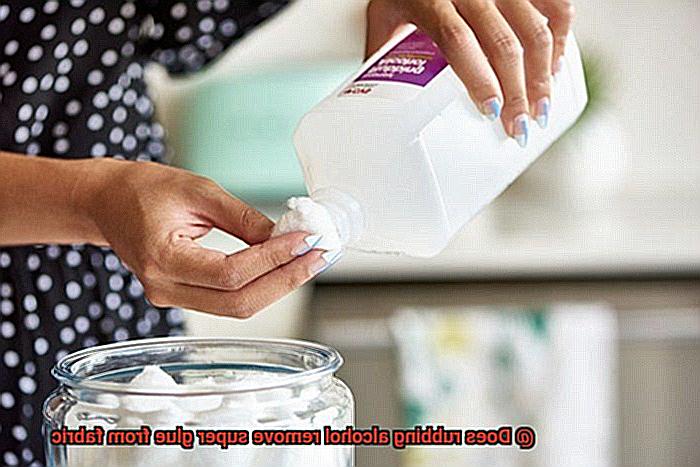
Another potential issue is that rubbing alcohol may not be effective in removing all types of super glue. If the adhesive has fully dried and hardened onto the fabric, it may require a stronger solution or professional cleaning services.
Lastly, it’s important to note that rubbing alcohol is flammable and can pose a safety hazard if not used correctly. It’s crucial to avoid smoking or using any open flames while using rubbing alcohol on fabrics. Additionally, keep it away from heat sources or electrical appliances to prevent any accidents.
Alternative Solutions for Removing Super Glue from Fabric
When it comes to removing super glue from fabric, rubbing alcohol is the usual solution recommended. However, what happens when you don’t have rubbing alcohol or it doesn’t work effectively? Fear not, there are alternative solutions that can be used to remove super glue from fabric.
One alternative solution is vinegar. Vinegar is a natural solvent that can break down the chemical bonds in super glue and loosen its grip on fabric fibers. To use vinegar, first soak the affected area in warm water for a few minutes to soften the glue. Then, apply undiluted vinegar to the stain and let it sit for a few minutes before gently rubbing the area with a clean cloth. Repeat this process until the stain is completely removed.
Another option is acetone, which can be found in most nail polish removers. However, it’s important to note that acetone can be harsh on certain fabrics and may cause discoloration or damage. To use acetone, apply a small amount to an inconspicuous area of the fabric first to test for any adverse reactions. If there are no issues, apply acetone to the stain and let it sit for a few minutes before using a clean cloth to gently rub the area until the stain is removed.
For more delicate fabrics such as silk or wool, it may be best to use a commercial glue remover specifically designed for these types of materials. These products are typically gentler on fabrics and can effectively remove super glue without causing damage.
It’s important to test any solution on an inconspicuous area of the fabric first before applying it to the stain to avoid any further damage. Here are some tips and tricks to help you get rid of those stubborn stains:
- Soak the affected area in warm water first
- Use undiluted vinegar as a natural solvent
- Try acetone sparingly and test on an inconspicuous area first
- Use commercial glue removers for more delicate fabrics
Tips for Safely Using Rubbing Alcohol on Fabrics
Worry not, rubbing alcohol might be the solution you need. However, it’s crucial to use it safely to avoid damaging your fabric or causing harm to yourself. Here are some tips for safely using rubbing alcohol on fabrics to remove super glue stains:
Spot Test First
It is crucial to test a small, inconspicuous area of the fabric before applying rubbing alcohol to the entire stain. This will help you determine if the alcohol will cause any damage or discoloration to the fabric.
Use High Percentage Rubbing Alcohol
Opt for a high percentage of rubbing alcohol, ideally 90% or higher, to ensure that it is effective in breaking down the super glue.
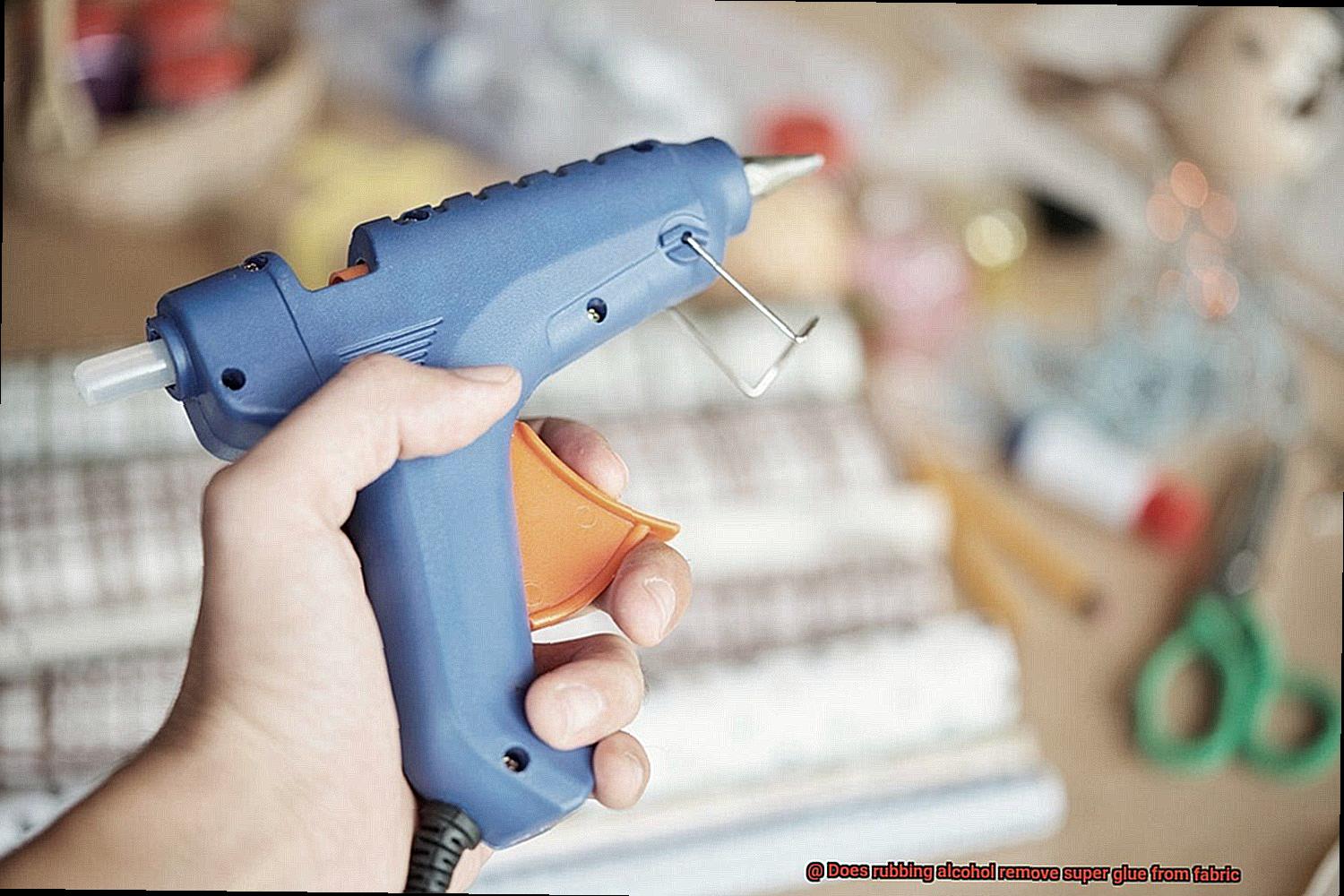
Dab, Don’t Rub
While applying the rubbing alcohol, gently dab a small amount onto the affected area with a cotton swab or cloth. Avoid rubbing or scrubbing the fabric as this can damage the fibers and make the stain worse.
Let it Sit
Once you’ve applied the rubbing alcohol, allow it to sit on the fabric for a few minutes to give it time to break down the super glue.
Blot Away
After letting the rubbing alcohol sit for a few minutes, gently blot the area with a clean cloth to remove the alcohol and any dissolved glue particles.
Wash According to Care Instructions
Always wash the fabric according to its care instructions after using rubbing alcohol, as residual alcohol can cause discoloration or damage over time.
Remember, it’s important not to use rubbing alcohol on delicate fabrics such as silk or wool as it can cause damage or discoloration. If you’re unsure about using rubbing alcohol on a particular type of fabric, seek advice from a professional cleaner.
Benefits of Professional Cleaning Services for Removing Super Glue from Fabric
If you’ve ever tried to remove super glue stains from fabric, you know it’s no easy feat. DIY methods can be effective, but they also run the risk of damaging your beloved fabric. That’s why professional cleaning services are a great option for removing super glue stains from fabric.
Here are the top benefits of using professional cleaning services for removing super glue stains from fabric:
Expertise and Experience
Professional cleaners have the expertise and experience to tackle tough stains like super glue without causing any damage. They are equipped with specialized equipment and products that can effectively remove the glue without harming the fabric. With their knowledge and skills, they can guarantee that your fabric will look as good as new.
Time-saving
Trying to remove super glue stains from fabric can be a time-consuming process. Researching different DIY methods or buying expensive products that may or may not work can be frustrating. Professional cleaners can get the job done quickly and efficiently, saving you time and effort. You simply need to drop off your stained fabric at the cleaner’s and pick it up when it’s ready.
Safety
Some cleaning products used to remove super glue can be hazardous to use, especially if you don’t know how to handle them properly. Professional cleaners are trained to use these products safely, without posing any risk to your health or safety. You don’t have to worry about handling toxic chemicals or exposing yourself or your family to harmful substances.
Convenience
Taking your stained fabric to a professional cleaner is convenient. You don’t have to spend time researching different DIY methods or buying expensive products that may or may not work. All you need to do is drop off your stained fabric at the cleaner’s and pick it up when it’s ready.
Conclusion
In summary, rubbing alcohol is a reliable solution for removing super glue stains from fabric. However, it’s crucial to understand the correct method for using it to prevent further damage. Before applying rubbing alcohol, always test a small, inconspicuous area of the fabric to ensure that it won’t cause any discoloration or harm.
Rubbing alcohol contains isopropyl alcohol, which acts as a solvent and can dissolve the bonds between super glue molecules. This weakens the bond between the glue and fabric, making it easier to remove the stain. Although rubbing alcohol is highly effective in eliminating super glue stains from fabric, it’s necessary to take precautions while using it.
If rubbing alcohol doesn’t work on your specific fabric or stain type, there are alternatives such as vinegar or acetone. Always test any solution on an inconspicuous area of the fabric first before applying it to the stain.
Professional cleaning services are also an excellent option for removing super glue stains from fabrics. They have expertise and experience in handling tough stains like super glue without causing any damage. Moreover, they can save time and effort while ensuring safety and convenience.

